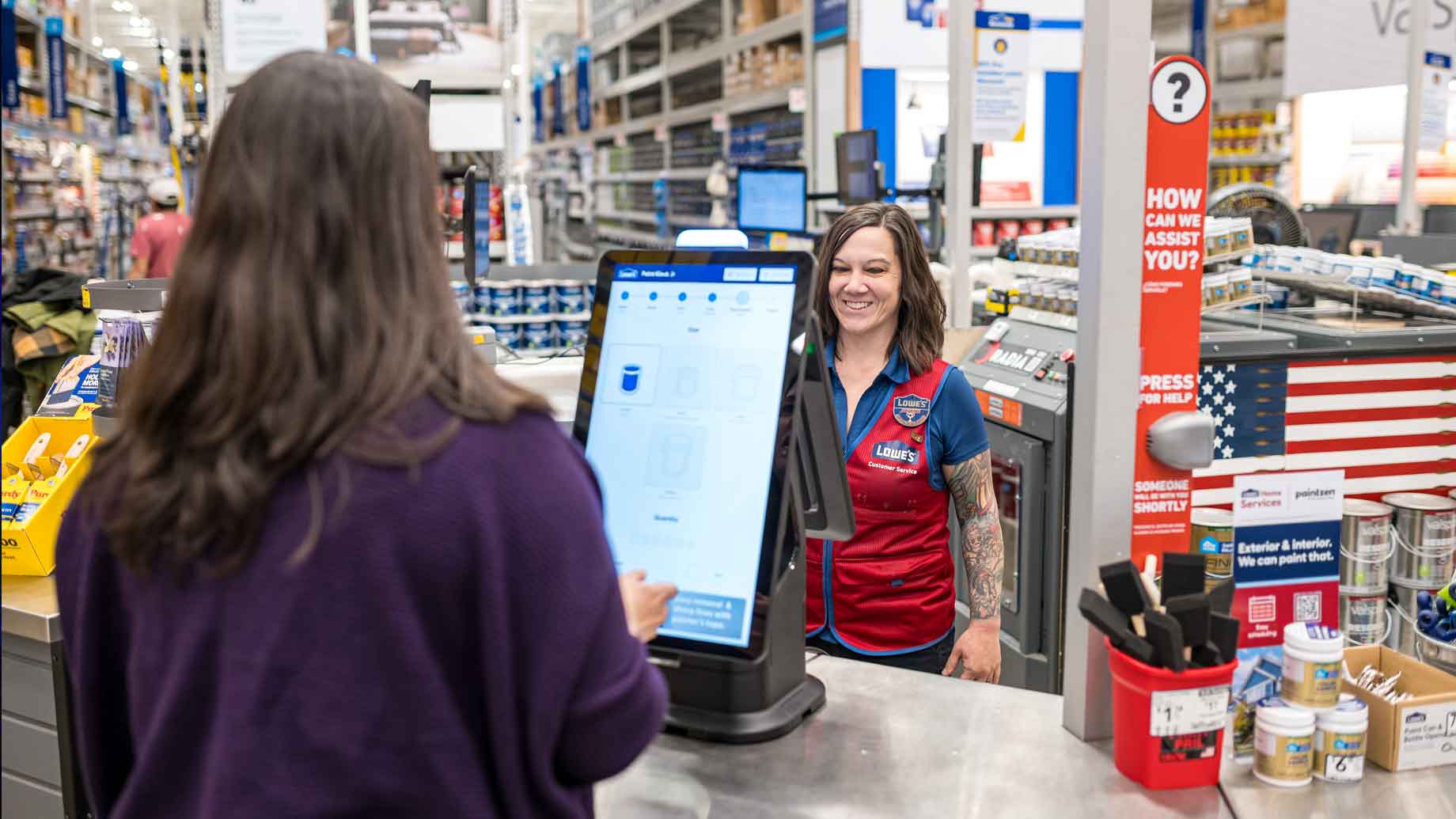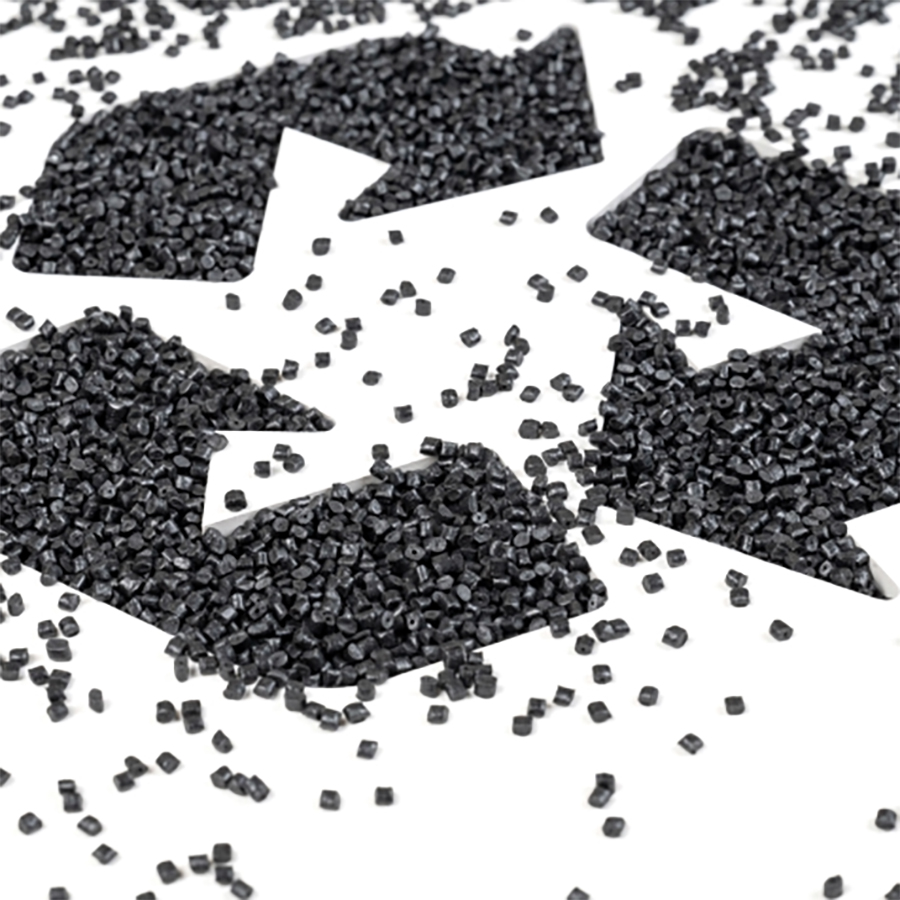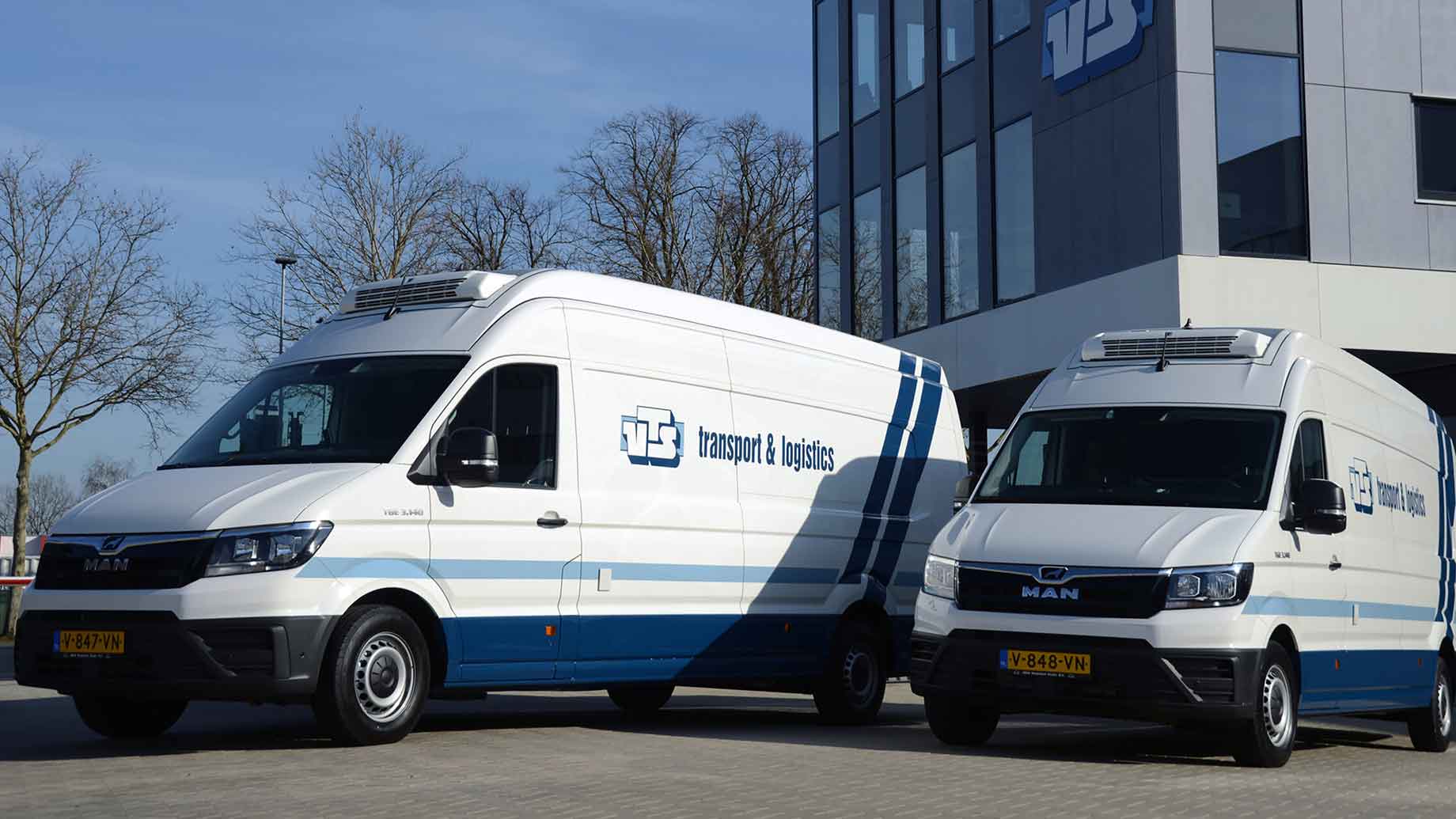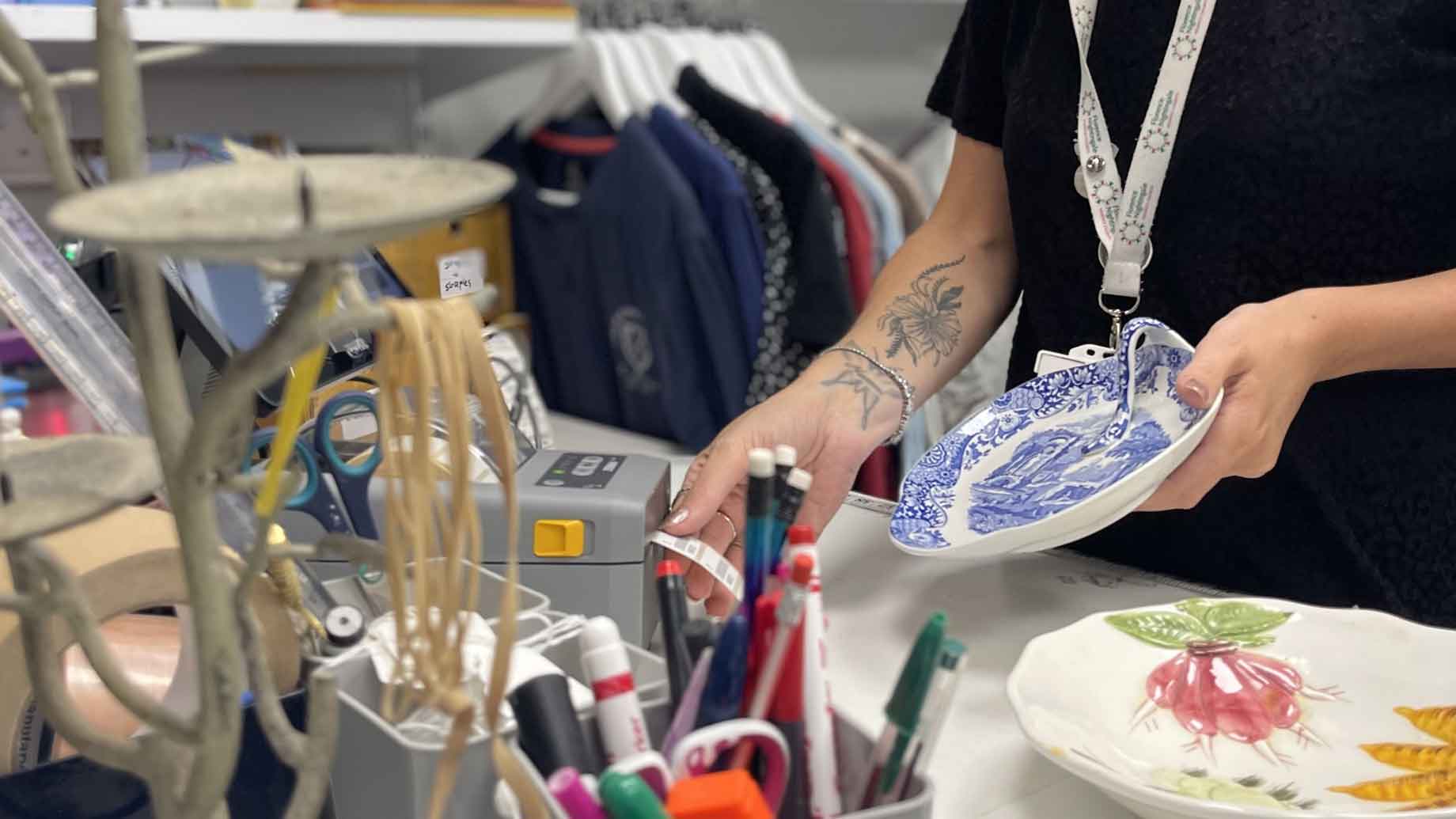Transform retail operations with Zebra’s retail technology solutions, featuring hardware and software for improving inventory management and empowering teams.
Streamline operations with Zebra’s healthcare technology solutions, featuring hardware and software to improve staff collaboration and optimise workflows.
Enhance processes with Zebra’s manufacturing technology solutions, featuring hardware and software for automation, data analysis, and factory connectivity.
Zebra’s transportation and logistics technology solutions feature hardware and software for enhancing route planning, visibility, and automating processes.
Zebra's public sector technology solutions enhance decision-making, streamline operations, and safeguard communities with advanced software and rugged hardware.
Zebra's hospitality technology solutions equip your hotel and restaurant staff to deliver superior customer and guest service through inventory tracking and more.
Zebra's market-leading solutions and products improve customer satisfaction with a lower cost per interaction by keeping service representatives connected with colleagues, customers, management and the tools they use to satisfy customers across the supply chain.
Empower your field workers with purpose-driven mobile technology solutions to help them capture and share critical data in any environment.
Zebra's range of mobile computers equip your workforce with the devices they need from handhelds and tablets to wearables and vehicle-mounted computers.
Zebra's desktop, mobile, industrial, and portable printers for barcode labels, receipts, RFID tags and cards give you smarter ways to track and manage assets.
Zebra's 1D and 2D corded and cordless barcode scanners anticipate any scanning challenge in a variety of environments, whether retail, healthcare, T&L or manufacturing.
Zebra's extensive range of RAIN RFID readers, antennas, and printers give you consistent and accurate tracking.
Choose Zebra's reliable barcode, RFID and card supplies carefully selected to ensure high performance, print quality, durability and readability.
Zebra's rugged tablets and 2-in-1 laptops are thin and lightweight, yet rugged to work wherever you do on familiar and easy-to-use Windows or Android OS.
With Zebra's family of fixed industrial scanners and machine vision technologies, you can tailor your solutions to your environment and applications.
Zebra’s line of kiosks can meet any self-service or digital signage need, from checking prices and stock on an in-aisle store kiosk to fully-featured kiosks that can be deployed on the wall, counter, desktop or floor in a retail store, hotel, airport check-in gate, physician’s office, local government office and more.
Adapt to market shifts, enhance worker productivity and secure long-term growth with AMRs. Deploy, redeploy and optimize autonomous mobile robots with ease.
Discover Zebra’s range of accessories from chargers, communication cables to cases to help you customise your mobile device for optimal efficiency.
Zebra's environmental sensors monitor temperature-sensitive products, offering data insights on environmental conditions across industry applications.
Zebra's location technologies provide real-time tracking for your organisation to better manage and optimise your critical assets and create more efficient workflows.
Enhance frontline operations with Zebra’s AI software solutions, which optimize workflows, streamline processes, and simplify tasks for improved business outcomes.
Empower your frontline with Zebra Companion AI, offering instant, tailored insights and support to streamline operations and enhance productivity.
The everything you need to rapidly and cost effectively develop high-performance AI vision applications on Zebra mobile computers.
Zebra Workcloud, enterprise software solutions boost efficiency, cut costs, improve inventory management, simplify communication and optimize resources.
Keep labour costs low, your talent happy and your organisation compliant. Create an agile operation that can navigate unexpected schedule changes and customer demand to drive sales, satisfy customers and improve your bottom line.
Drive successful enterprise collaboration with prioritized task notifications and improved communication capabilities for easier team collaboration.
Get full visibility of your inventory and automatically pinpoint leaks across all channels.
Reduce uncertainty when you anticipate market volatility. Predict, plan and stay agile to align inventory with shifting demand.
Drive down costs while driving up employee, security, and network performance with software designed to enhance Zebra's wireless infrastructure and mobile solutions.
Explore Zebra’s printer software to integrate, manage and monitor printers easily, maximising IT resources and minimising down time.
Make the most of every stage of your scanning journey from deployment to optimisation. Zebra's barcode scanner software lets you keep devices current and adapt them to your business needs for a stronger ROI across the full lifecycle.
RFID development, demonstration and production software and utilities help you build and manage your RFID deployments more efficiently.
RFID development, demonstration and production software and utilities help you build and manage your RFID deployments more efficiently.
Zebra DNA is the industry’s broadest suite of enterprise software that delivers an ideal experience for all during the entire lifetime of every Zebra device.
Advance your digital transformation and execute your strategic plans with the help of the right location and tracking technology.
Boost warehouse and manufacturing operations with Symmetry, an AMR software for fleet management of Autonomous Mobile Robots and streamlined automation workflows.
The Zebra Aurora suite of machine vision software enables users to solve their track-and-trace, vision inspection and industrial automation needs.
Zebra Aurora Focus brings a new level of simplicity to controlling enterprise-wide manufacturing and logistics automation solutions. With this powerful interface, it’s easy to set up, deploy and run Zebra’s Fixed Industrial Scanners and Machine Vision Smart Cameras, eliminating the need for different tools and reducing training and deployment time.
Aurora Imaging Library™, formerly Matrox Imaging Library, machine-vision software development kit (SDK) has a deep collection of tools for image capture, processing, analysis, annotation, display, and archiving. Code-level customisation starts here.
Aurora Design Assistant™, formerly Matrox Design Assistant, integrated development environment (IDE) is a flowchart-based platform for building machine vision applications, with templates to speed up development and bring solutions online quicker.
Designed for experienced programmers proficient in vision applications, Aurora Vision Library provides the same sophisticated functionality as our Aurora Vision Studio software but presented in programming language.
Aurora Vision Studio, an image processing software for machine & computer vision engineers, allows quick creation, integration & monitoring of powerful OEM vision applications.
Adding innovative tech is critical to your success, but it can be complex and disruptive. Professional Services help you accelerate adoption, and maximise productivity without affecting your workflows, business processes and finances.
Zebra's Managed Service delivers worry-free device management to ensure ultimate uptime for your Zebra Mobile Computers and Printers via dedicated experts.
Find ways you can contact Zebra Technologies’ Support, including Email and Chat, ask a technical question or initiate a Repair Request.
Zebra's Circular Economy Program helps you manage today’s challenges and plan for tomorrow with smart solutions that are good for your budget and the environment.
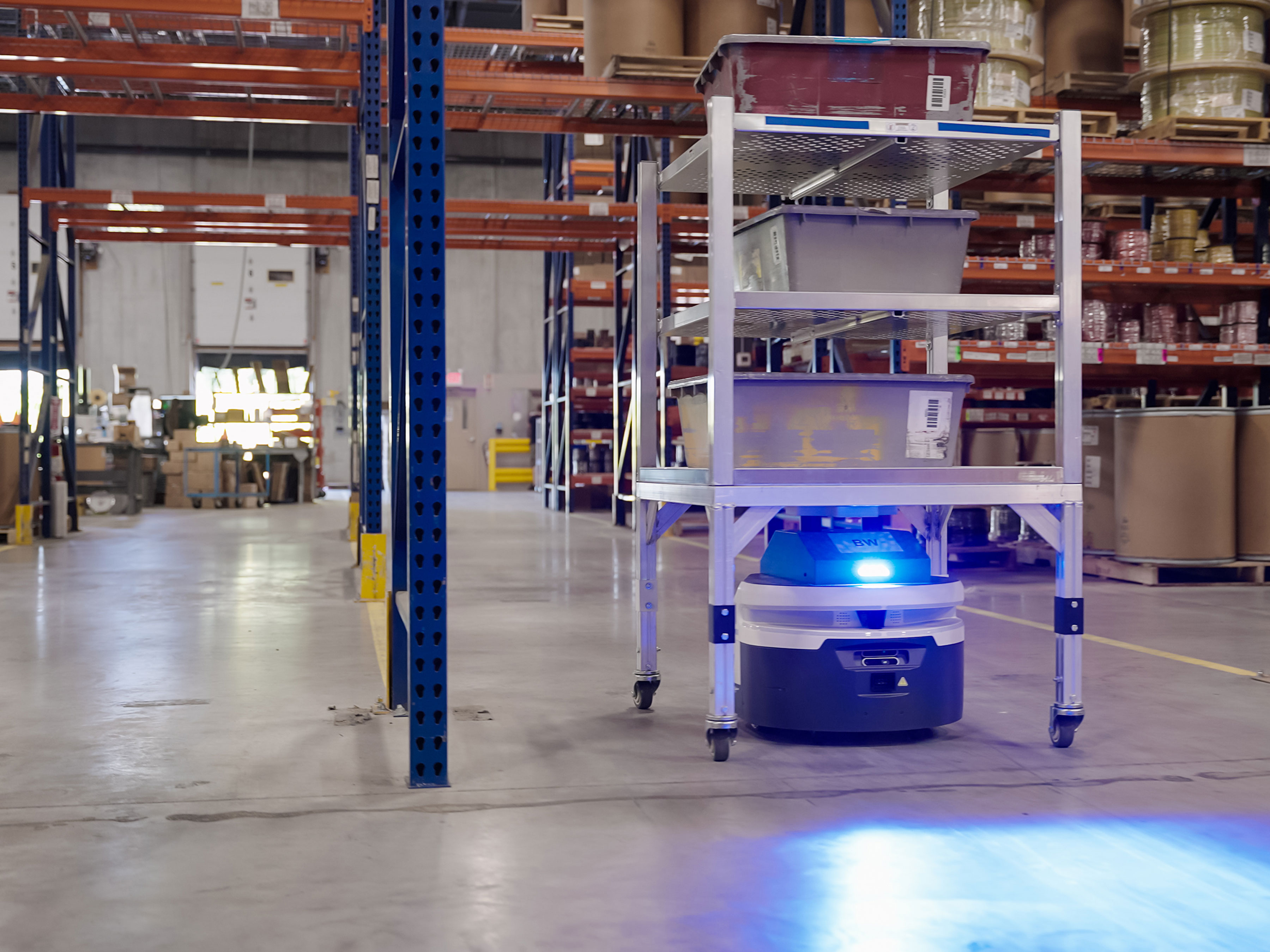
Waytek Improves Throughput by 25% with Autonomous Mobile Robots
Waytek, a leading distributor of automotive electrical components, has been in business since 1970, prioritising customer service and efficiency. However, due to a rise in component demand and worker shortage from 2020, Waytek's existing infrastructure struggled to keep up.
Zebra Success Story: Waytek
Overview: Distribution/Fulfilment Challenge
Increase daily order output in exisiting facility in a challenging labour market; replace ageing fixed conveyor system; gain flexibility and scalability for distribution operations
Benefits / Outcomes
- 25% increase in daily throughput
- 13% facility space recovery
- 5 Years added to facility lifespan
Customers
Waytek
Chanhassen, Minnesota/USA
Industry
Distribution/Fulfilment
Solutions
About Waytek
Waytek, headquartered in Chanhassen, Minnesota, is a family-owned distributor of electrical components to manufacturers and upfitters specialising in wire harnesses and mobile equipment, and has been in business since 1970. With a mission to provide an exceptional customer experience, Waytek is committed to making it easy for its customers to source electrical parts.
With a rise in component demand across the manufacturing sector combined with the worker shortage, Waytek found itself in the midst of challenging times starting 2020. Over the previous year, its order volumes had multiplied as a result of growth in e-commerce, however, the company struggled to meet this new demand with its existing fixed infrastructure. To keep up with its core mission of providing exceptional customer service, Waytek decided to deploy AMRs.
The Challenge
In 2007, Waytek had moved into its 100,000 sq. ft. distribution facility to scale its operations and installed a sortation conveyor system that could handle its increased volumes. This fixed conveyor system helped the company order, sort and manage 800 orders per day for 13 years.
However, around 2019, order volumes were approaching 800 per day and its conveyor wasn’t going to be able to handle the increased volume. In addition, the conveyor ran through the building occupying significant floor space which made it difficult to expand storage capacity for the additional inventory needed to support its customers.
As a result, Waytek started looking for a flexible solution that could enable the company to meet customer demand as well as scale operations within the same facility.
Amongst all our technological implementations until now, Zebra was the easiest to deploy and it took us only three days to become operational with their AMRs. These AMRs are very easy to work with and rarely have any downtime. The Zebra team also consistently maintains and updates the robots, so we don’t have to worry about any breakdowns.
Mike Larson, COO and Co-Owner, Waytek
The Solution
When Waytek started looking for options, it weighed two possibilities— making major modifications to its conveyor system or any new automation solution that would enable the company to fulfil orders from the same facility.
As conveyors come with their own challenges, for instance, the need for continuous maintenance, extensive floor requirements, and limited flexibility, Waytek wasn’t keen on moving forward with this option. Moreover, it wanted to elongate the lifespan of its current warehouse and any modifications to its conveyor system would mean blocking additional floor space.
While considering its options, Waytek came across AMRs and decided to evaluate the benefits of modifying its conveyor system vs. deploying AMRs. Compared to conveyors, Waytek found that AMRs save floor space and provided flexibility to scale. With AMRs, warehouses can also scale effortlessly as you don’t need to remap your whole facility. If your order volumes increase, you can add more robots.
Due to the low capital investment and the ability to quickly scale, Waytek selected AMRs to fulfil more orders, make its distribution facility more efficient and free its workers from certain manual tasks.
The Zebra Difference: Outcome and Benefits
After deploying the AMRs, Waytek not only improved its throughput but also realised that its workers were much happier as it reduced their workload and enabled them to focus on value-added activities to support their customers. Let’s see how AMRs were a game-changer for Waytek.
- With AMRs, Waytek is now able to fulfil over 1,000 orders per day compared to 800 orders per day previously. This change has helped the company to improve throughput by 25%.
- By replacing its conveyor system with AMRs, Waytek was able to reclaim 13% of its distribution space in the warehouse. Waytek can use this extra space to store more goods and expand its operations as well as extend the lifespan of its facility by five years.
- Since robots have been added to Waytek’s workflow, there has been a significant reduction in manual walking. This enables its picking team to stay productive and focus on customer orders.
- Waytek is also using these AMRs to recycle corrugate which was earlier done manually. Eliminating these manual movements across the facility has improved worker efficiency significantly, saving employees over 300 ft. of walking on each trip.
- What really stood out for Waytek was the super-fast deployment of AMRs in its facility. The company was able to implement and integrate these systems within three days.
- Because of the Symmetry™ software, Waytek employees are able to operate the robots by using their tablets or mobile phones. As this software is maintained completely by the Zebra team, the addition of these robots didn’t add any workload to Waytek’s IT team.
With low capital investment, Waytek was able to resolve its challenges and meet customer expectations in no time.
Related Resources
Legal Terms of Use Privacy Policy Supply Chain Transparency
ZEBRA and the stylized Zebra head are trademarks of Zebra Technologies Corp., registered in many jurisdictions worldwide. All other trademarks are the property of their respective owners. Note: Some content or images on zebra.com may have been generated in whole or in part by AI. ©2025 Zebra Technologies Corp. and/or its affiliates.
